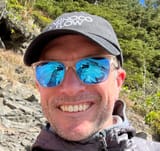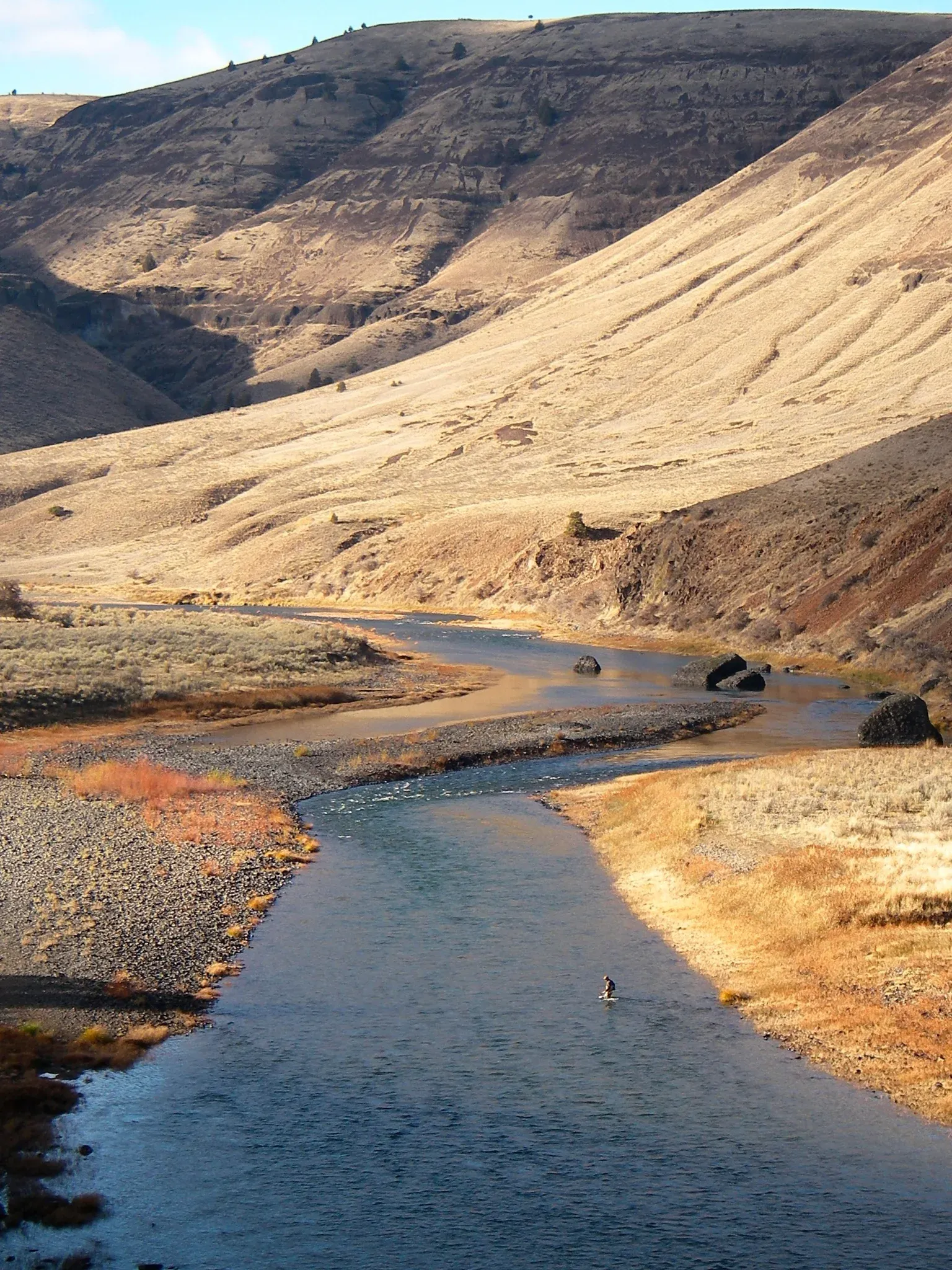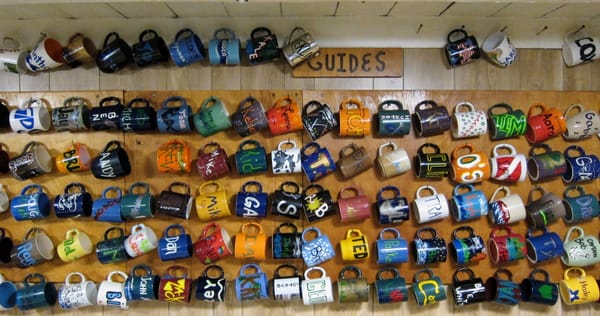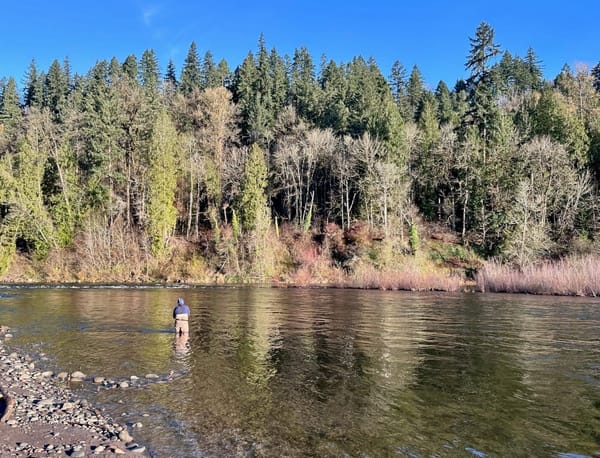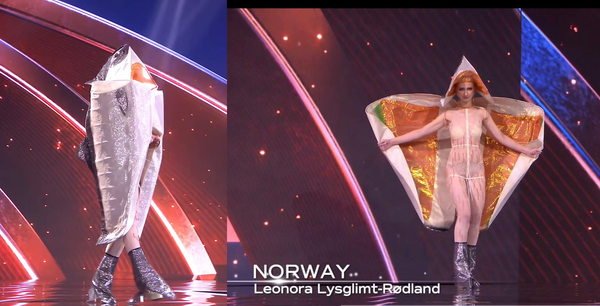Fix your yard, help a fish?
Join us for a discussion of backyard ecology in our Summer edition of the Read By the River book club.
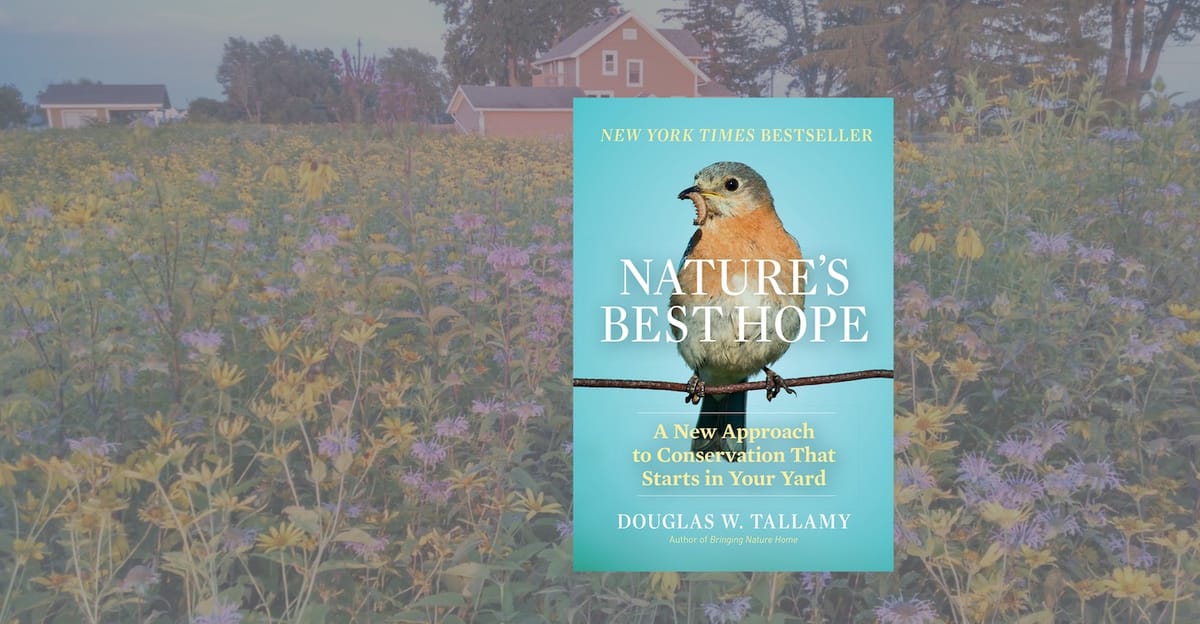

Hey-ho CFSers!
Time for another Read By the River book club meeting, this time, our Summer edition.
Bring ecology home
It can get easy to feel bogged down.
To think change is something happening at a bigger level than any of us can contend with.
That's why I'm happy to announce that our summer book will be Nature's Best Hope: A New Approach to Conservation That Starts in Your Yard, by Douglas Tallamy.
Tallamy's an ecologist who's written several books centered on how to restore human connection with the web of life. In turn, to help renew wildlife populations. He's written several great books, including Bringing Nature Home and The Nature of Oaks.
But Nature's Best Hope is a practical and inspiring read. Perfect for the summer edition of CFS' Read By the River. In Bringing Nature Home, Tallamy offers a practical blueprint for ecological change that starts in our own backyard.
For us anglers, birds are our key allies in helping understand fish. Swallows swooping over a river signal hatching insects. And insects form the base of the food pyramid for trout and many other aquatic species. As insect populations around the world are in steep decline, anything we can do on a local level is valuable for fish.
Thanks to Graydon and Robert, who joined in our Spring edition of Read By the River, for the suggestion. I'm not sure which of you mentioned Nature's Best Hope as an idea, but good call. It feels more relevant than ever.
A discussion, plus practical advice
I'll bring some resources the book references to take this beyond theory into practice.
Confession: I've read the book before, and been able to take action on some of the steps contained in it. I was able to achieve the Certified Backyard Habitat Gold rating in my previous garden, and I'm working towards it in my present home. I'm happy to be able to read it again and share where the steps have led in my recent effort.
Save the date and get reading!
We'll be meeting virtually on Thursday, September 11th, at 3:30 PST / 6:30 EST. Everyone's welcome to join.
Follow the Luma link to register and get it into your calendar, pick up the book, and I'll send you the details.
Here's a link to purchase Nature's Best Hope from Bookshop.org. Your local library probably has it as well.
Here's Tallamy explaining how easy it can be:
Converting a huge expanse of lawn bereft of trees into a wildlife habitat may simply look like an impossible task. But here's the thing, once you start transitioning an area to wildlife habitat, Mother Nature steps in and helps you! A tiny speck of a seed produces a mound of blooms covered with pollinators, a jay plants an oak for you, a bare spot in the soil becomes home to native ground-nesting (non-stinging) bees. Time passes, and before you know it, there are more flowers, trees have tripled or quadrupled in height, and the landscape is filled with movement and birdsong. This really does happen!
In other 🔥 book news, Creation Lake
My re-read of Nature's Best Hope for the Read By the River book club is following an absolute slapper, Creation Lake by Rachel Kushner. I just finished, and I highly recommended it!
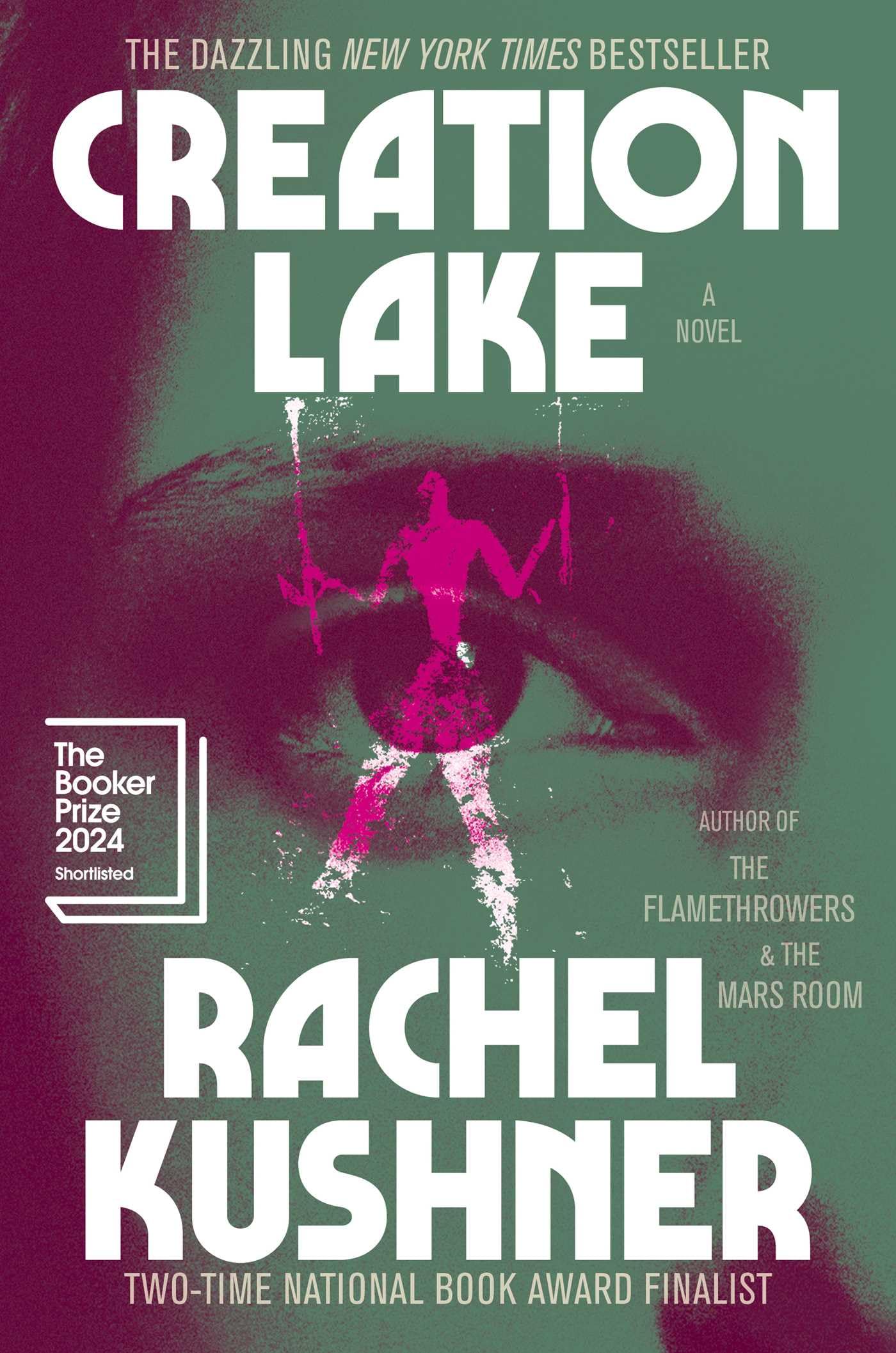
In Creation Lake, a shadowy protagonist infiltrates a French commune. She surveils and manipulates its members ahead of a showdown with the state around a municipal water project, while becoming increasingly aligned with communications from the group's guru. The guru who's obsessed with tuning into and embodying the real legacy of Neanderthal man. So much so that he's moved into a cave.
It's great. Here's a passage on learning to hand-fish. Compare this with your own efforts to learn to fly-fish, perhaps:
Bruno had started to fish with his bare hands long before he had taken up contemplation of early people, long before he’d retreated to life in a cave.
During the war, when he had lived with the old woman in the country, he’d watched a small furry animal, a pine marten, patiently holding its snout in the water of a stream, in between two rocks. It did not seem to be drinking. A young perch moved downstream and settled in between the rocks near the animal’s snout. The pine marten held still. The perch was also still, sidled up against the face of the pine marten, as water purled around this odd pair. What is going on here, Bruno had wondered, and then this brown furry pine martin lifted its head in a kind of slow motion, and bit down, also in a kind of slow motion. The fish flapped; the animal held on.
After observing this strange occurrence once more, Bruno surmised that the animal was using touch, perhaps its whiskers, or its nose, to tickle the fish. The fish, he guessed, was responding to this sensation by going still, as if paralyzed, rendering itself catchable, killable, eatable.
Bruno tried putting his hand in the creek, in between two rocks, just as he’d seen the pine marten do with its snout. He waited. This was in spring, and the water was frigid. His hand ached, but he vowed to use patience the way this little creature had. Two long afternoons, nothing happened except he lost feeling in his hand. But he kept at it. Eventually a fish rested at the juncture between submerged rocks. He felt its side, the texture of its scales, making contact with the tips of his fingers. His heart began to pound, and the pounding of his heart warmed his blood and gave him the resolve to stay still. The fish very slowly adjusted itself so that its side was brushing against Bruno’s hand. All at once he closed his hand and dug his fingernails into its gills.
He lost that fish.
What he came to understand, as he tried again and again to fish by hand, was that the final movement, the kill, could not be sudden. There must be no swift movements. He learned to close his hand slowly but forcefully, to extinguish the life of the fish.
Bruno spent the last year of the war neck-deep in the waterways of the southern Corrèze, his face tilted up to breathe, the waterline at his chin and his ears, his hands low, down in the depths. He would remain in this demanding position for hours, waiting for a bream or a perch or a brown trout, the holiest of catches. Now that I am old, Bruno said, I no longer fish. My age and my resolve have reduced and simplified my dietary needs. I have taken already my fill from the rivers and lakes and streams. What stays with me, and perhaps informs my thinking still, is the transmission of knowledge that I learned by touch.
By touch I could tell you what kind of fish had brushed up against my hand.
By that same touch I could tell you what part of the fish’s body was against my hand.
And I could tell you how large this fish was, that I was touching.
Because I learned the art of handfishing, Bruno said, I can imagine a number of ways the Thals might have caught their own fish. A number of ways by which their “technology” was artful and ingenious, but humble.
I don’t have proof. I don’t need proof.
What do scientists do? They look for proof. In its absence, they set up models. An experiment, such as the one they designed to figure out how Thals might have hunted choughs.
I do not set up models. What I do is live. And because of the way I have lived, I know what is possible.
Leaders ➰
Mindset 🧘♂️
"Can fly fishing for trout change your life?" Betteridge's law of headlines suggests no, but Todd Tanner makes a great case for "Yes!" at Hatch magazine (link)
Environment ⛰️
Reasons to be Cheerful is taking a twelve-story look at the Mississippi River Basin. It includes a playlist of river songs curated by founder David Byrne (link)
What makes a headwater? Which Western state is the Headwater-est of them all? Due West Anglers does the research. (link)
Tools 🎣
Cosmic John at Box of Rain takes an extensive look at fly lines. All of John's posts are dripping with experience and perspective and worth a study. (link)
Technique 🤺
We've all been there and done that. It's worth reiterating, ad nauseum. Epic Fly Rods counts down 10 common fly fishing mistakes and how to fix them (link)
🎥 Dry-fly presentations are the most straightforward for beginners to learn. Tune in to Big Sky Anglers' series on the subject, learn to read water, and find fish. (part 1, part 2)
Conservation 🌲
With a success removing the public lands grab (despite all the other garbage in it) from the Blatantly Bad Bill, the next conservation fight in U.S. federal politics is the potential repeal of the Roadless Rule. Gear up with this primer from Western Watersheds Project. (link)
Community 🏘️
My profile of iconic angler and educator George Daniel is the cover story of the summer edition of Penn State alumni magazine PennStater. I'll have more behind-the-scenes on that next edition. But in a lovely bit of synchronicity George shot his mentor and another generational icon, Joe Humphreys, the namesake of the Penn State program, for a feature in Fly Fisherman. (link)
I first ventured there as a fisherman and so approached it in a fisherman's way, not with an eye toward the whole at once but to one promising spot at a time.
— Ted Leeson, Jerusalem Creek

